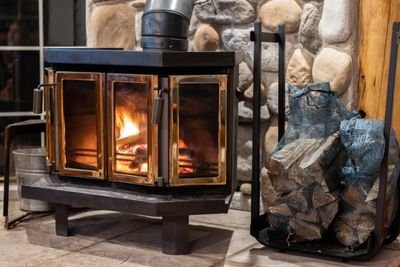How To Prevent Cold Air From Entering Your Fireplace
We partnered with a fireplace company for this post. The opinions in the post are honest. All reviews and opinions expressed in this post are based on our personal views. We are excited because we know you will love it.
One of the more negative aspects of owning a traditional fireplace is that cold outside drafts come down the chimney during the winter months. When this happens, your fire can’t heat your home as effectively. Preventing the cold air from entering your fireplace is something you should practice so that you can better warm up your home this season. Below, you can find various strategies to block these drafts from entering the house.
Purchase Fireplace Doors
When you’re preparing your fireplace for winter, consider getting a fireplace door to block any cold air. These doors create the perfect barrier between the fireplace and the home, keeping cold air outside and warm air inside. Not only will they be functional, but they’ll also add style to your home.
Install a Fireback
While this won’t stop the cold air from entering your home, a fireback will help the fireplace radiate more heat to counteract this. A fireback is a cast iron plate that sits inside the firebox, absorbing the heat and emitting it back into the room. This component also protects the back wall of your hearth. Many homeowners choose a fireback because it allows the fireplace to work more efficiently.
Inspect the Damper
The damper in your fireplace is a huge culprit that allows drafts to come through your chimney. If this component is warped or rusting, it can’t prevent the cold air from entering your fireplace. Replace this part if you find any damage. The damper should open and close easily to seal away the firebox and block the cold drafts from traveling further.
Pellet Stove
If you’re thinking of transitioning to a pellet stove, then it’s important to consider purchasing a hearth pad. Pellet stoves are an alternative to traditional fireplaces and can be more energy-efficient. However, they need proper insulation so that heat is not lost through the floor or walls. By placing a pellet stove hearth pads on your floor, you can prevent any heat from escaping and also minimize the risk of fire hazards. They come in various materials such as stone, tile, or brick, so you can choose one that complements your home’s aesthetic.
Add a Chimney Plug or Balloon
When you don’t plan to use your fireplace for some time, you can place a chimney plug or balloon inside your structure to block out cold air. This product inflates inside the chimney and creates a barrier separating the indoor and outdoor air. If you happen to start a fire in the fireplace without taking out the balloon, the product will deflate so that smoke can escape through the chimney.
If you don’t take precautions to prevent cold drafts from escaping your fireplace, you could face extra expenses this winter. Your home will have to work harder to heat itself if there’s a constant flow of cold air entering the house. Check or install the above components in your chimney and fireplace during winter to have more efficient fires.


